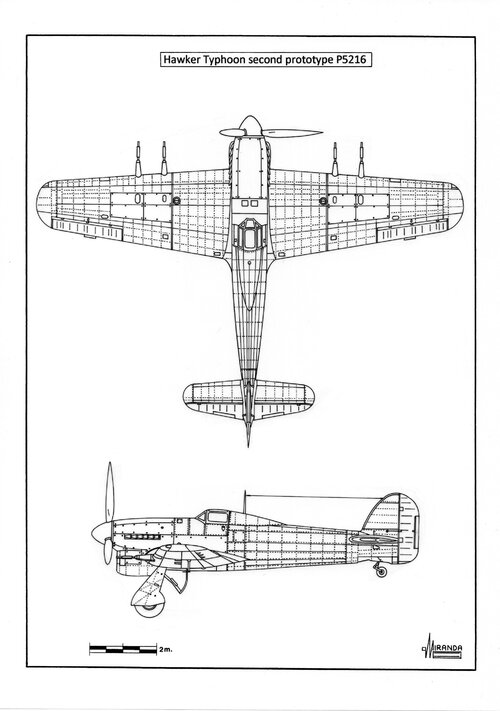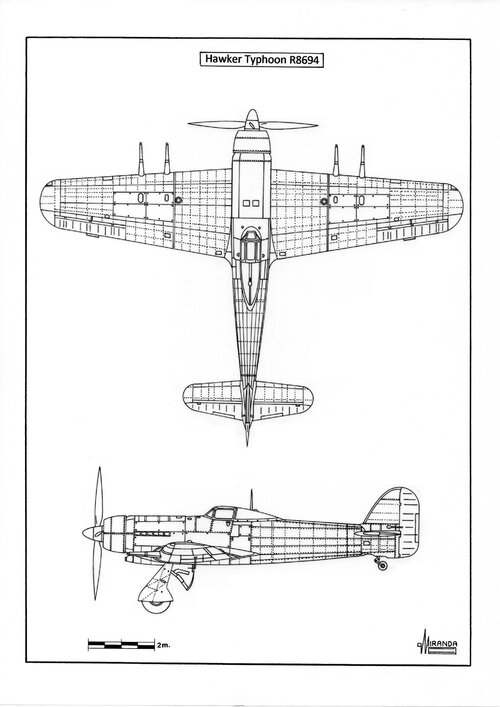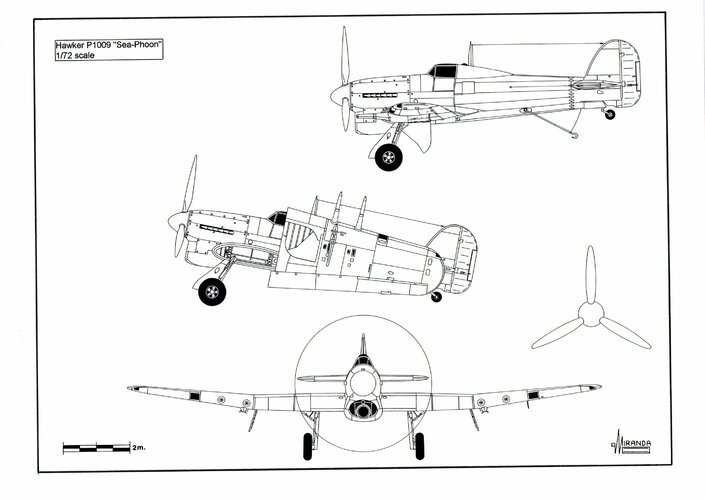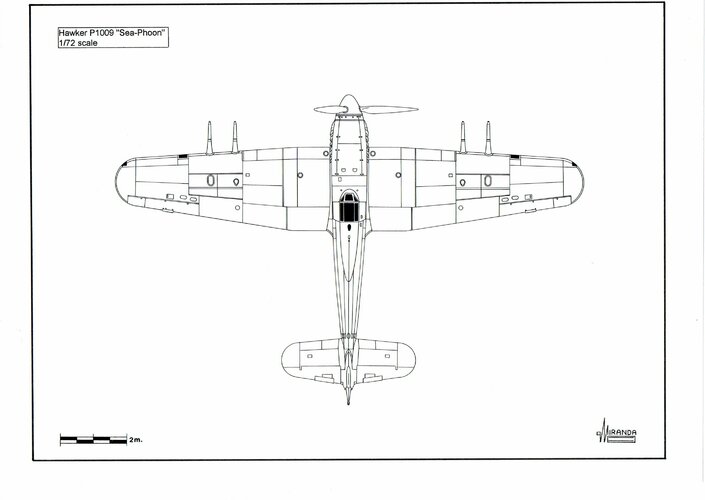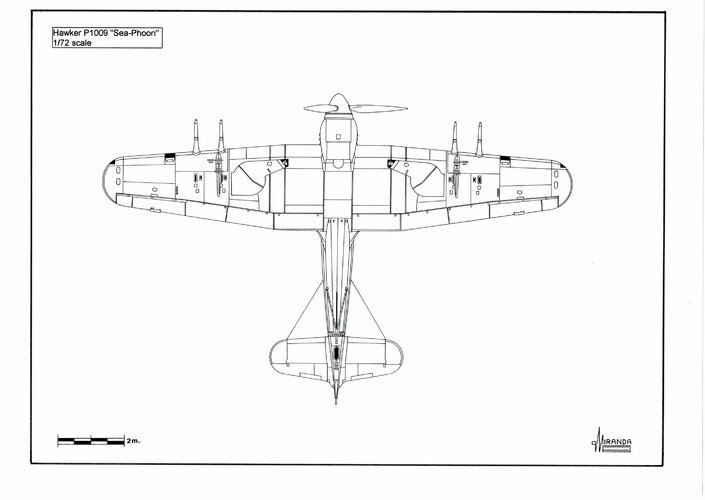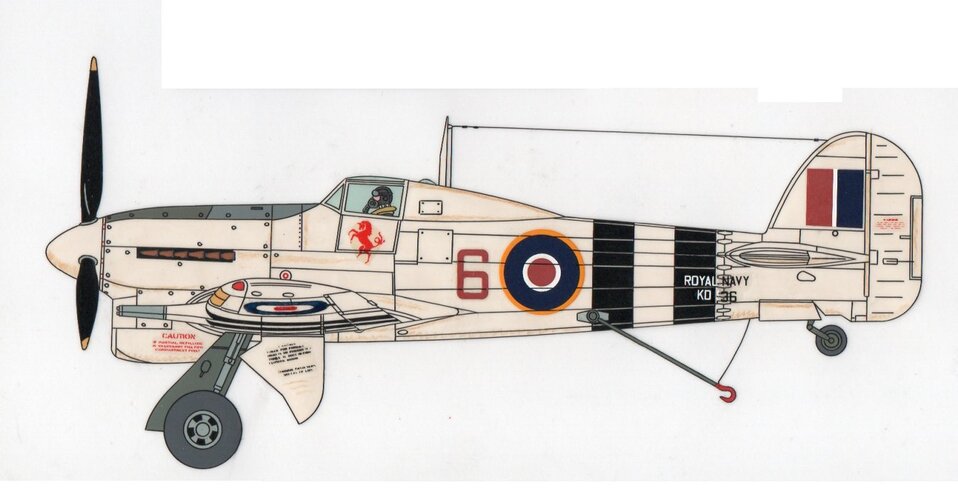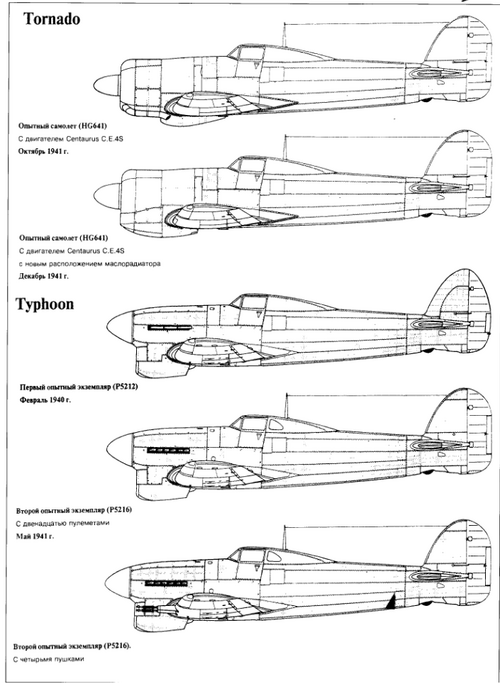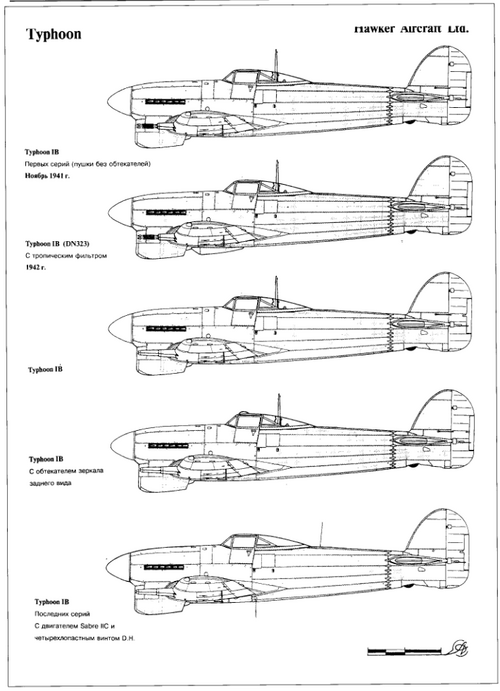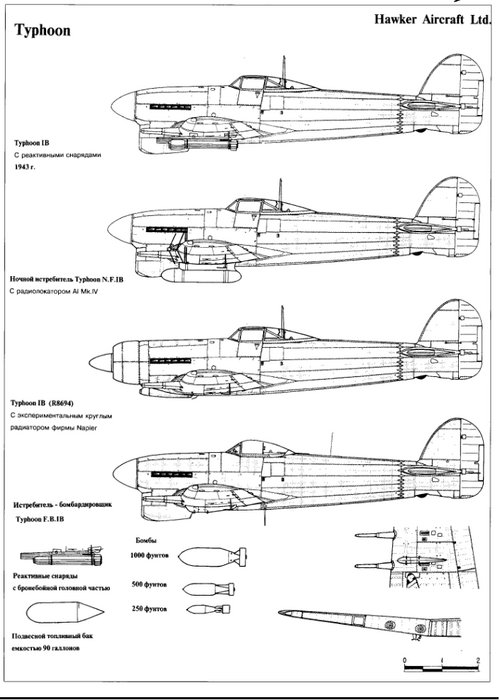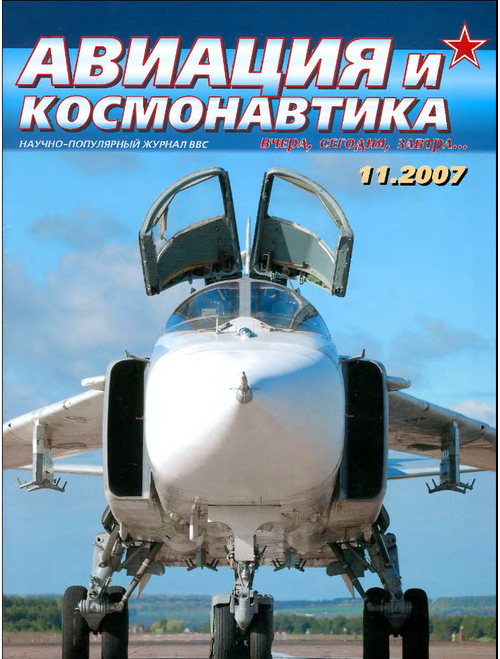On 3 May 1941 was flown the second Typhoon (P5216) with overall length of 32 ft (9.79 m), enlarged rudder, hinged D-doors on landing gear, tailwheel doors and twelve wing-mounted 0.303-in machine guns.
In June the prototype was modified with the installation of four belt-feed, 20 mm Hispano Mk.II cannons, with 140 rounds per gun and the D-doors were replaced by conventional doors mounted on the centre-line of the fuselage.
The P5216 armament was flight tested in Boscombe Down in July 1941, on 9 November was fitted with extended wingtips and long ailerons to improve its rather lacklustre high-altitude performance. On 1 July 1942 the airplane reached Mach 0.74 diving from 30,000 ft.
The P5216 was painted in the standard ‘Type B’ scheme with Yellow undersurfaces.
In June the prototype was modified with the installation of four belt-feed, 20 mm Hispano Mk.II cannons, with 140 rounds per gun and the D-doors were replaced by conventional doors mounted on the centre-line of the fuselage.
The P5216 armament was flight tested in Boscombe Down in July 1941, on 9 November was fitted with extended wingtips and long ailerons to improve its rather lacklustre high-altitude performance. On 1 July 1942 the airplane reached Mach 0.74 diving from 30,000 ft.
The P5216 was painted in the standard ‘Type B’ scheme with Yellow undersurfaces.

